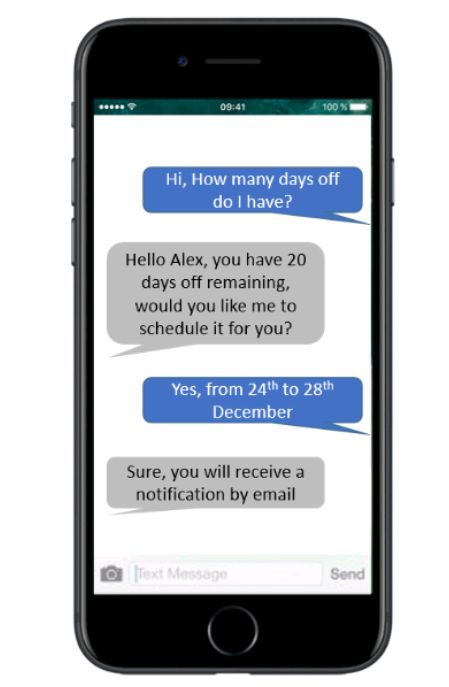RPA, chatbots, machine learning... whispers about these technologies are getting louder and louder. You hear about them at conferences and roundtables and in your personal life too—and heads of HR have taken notice. Assuming less of a flight attendant and more of a pilot role, HR heads have begun to see their business colleagues as internal clients, and HR itself as a strategic growth vehicle for the firm. Customer experience, quality, delivery, efficiency, strategy, and forecast are in their everyday speech. Naturally, new technologies have been key in enhancing user experience and improving efficiency. In the hangar of new HR tech, three airships stand out, and in this article we'll explore them.
Robotic process automation: more time for higher-level tasks
As you might infer from its name, RPA parallels the car industry's effectively using robots to complete specialised tasks. However, whereas auto plant robots are physical builders, RPA technology is software—but the efficiency gained is just as real. RPA can be installed either on company premises or in the cloud.
RPA could have big implications for HR by executing processes more efficiently. This would give HR professionals more time to focus on more important tasks and internal client expectations without sacrificing the level of service they are simultaneously giving.

RPA is best-suited for repetitive, high-volume tasks that are standardised and structured, such as those in which information needs to be transferred from one database to another. For example, RPA could help move information from the recruiting module to the core HR module, an area where most HR systems don't have an interface. The data would be extracted, transformed, and put in. Nothing would change in the delivery, but it would take a fraction of the time and the platform would be much more intuitive—it would be a matter of arranging boxes to execute actions.
Chatbots: a whole new user experience
Chatbots, or robots that can chat with you, could revolutionise your organisation. They can even now interact with other applications, broadening their use-cases—imagine sending a quick message to request time off instead of navigating through an online portal. This saves time for the staff, but also for the HR department, as the request is automated. Chatbots are also capable of learning: the more data is compiled, the more accurately they will perform.

Machine learning: becoming the future
Machine learning is technology that can extract patterns from data, and from that forecast how future data will look. It can adapt to software behaviour, too—for example, it could analyse the questions and types of answers that happen on a given application, and from that learn what kinds of answers to give to future questions.
In the HR sphere, machine learning could recommend whether a particular hire should be made by presenting statistics generated after analysing the candidate's information against the information of the company. It could also help provide better service to internal clients.
Takeaway
These technologies are fun to talk about and enticing to read about, but, used wrongly, as tech for tech's sake, they won't meet their potential. However, when combined with the right strategy, tools, and timelines, they can (and do) add real value. One common mistake is underestimating how well employees are able to adapt and use these tools—the lesson there is the importance of change management in aligning management's expectations with the employees' transformation.
Want to know more? Check out our website.
Next up on the KPMG Blog:
Governance and tax transparency should top CEO and board member to-dos
The content of this article is intended to provide a general guide to the subject matter. Specialist advice should be sought about your specific circumstances.

